This collection consists of short (2-5 minute) introductory videos on neuro-ophthalmological condition pathophysiology, diagnosis and treatment modalities by Dr. Andrew Lee.
Andrew G. Lee, MD, Professor of Ophthalmology, Weill Cornell Medicine; Chairman, Department of Ophthalmology, The Methodist Hospital, Houston, TX; Adjunct Professor of Ophthalmology, Baylor College of Medicine; Adjunct Professor of Ophthalmology, University of Iowa Hospitals and Clinics and the University of Buffalo; Clinical Professor of Ophthalmology, Department of Ophthalmology and Visual Sciences, University of Texas Medical Branch at Galveston; UT MD Anderson Cancer Center; and Texas A and M College of Medicine.
NOVEL: https://novel.utah.edu/
TO
Filters: Collection: ehsl_novel_lee
| Title | Description | Subject | ||
|---|---|---|---|---|
| 26 |
 |
Botulinum Toxin | Summary: • Mechanism of botulinum toxin o Botox cleaves SNARE proteins, which are necessary for the release of acetylcholine containing vesicles in the pre-synaptic membrane o As a result, no acetylcholine will bind to the post-synaptic acetylcholine receptors • Uses of botulinum o Cosmetic > Of... | Botox; Hemifacial Spasm; Blepharospasm; Migraine; Strabismus |
| 27 |
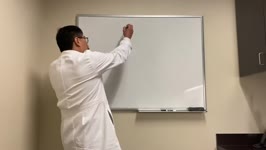 |
Brown Syndrome | Summary: Brown Syndrome • Constellation of oculomotor findings o Will have defect in ad-duction of the elevated eye o Unilateral • Etiology o Congenital forms o Acquired forms > Inflammatory > Mass compression > Muscle paresis • Pathophysiology o Can be due to issue with superior oblique, troc... | Brown Syndrome; Oculomotor |
| 28 |
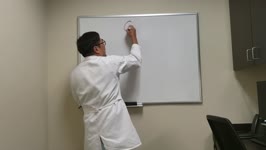 |
CABG Related Vision Loss | Dr. Lee lectures medical students on the subject of CABG related vision loss. | CABG; Ischemic Optic Neuropathy; Post-operative |
| 29 |
 |
CRAO/NAION | Summary: CRAO/NAION: 1. Risk factors for both 2. Presentation a. Patient has vasculopathic factors i. Hypertension ii. Diabetes iii. Hyperlipidemia iv. Smoker b. Acute unilateral vision loss c. Ipsilateral RAPD (relative afferent papillary defect) d. This presentation could result from CRAO or NAION... | CRAO; NAION; Vascular; Embolic |
| 30 |
 |
Carotid Artery Disease in Ophthalmology | Dr. Lee lectures medical students on the subject of carotid artery disease in ophthalmology. | Carotid Artery; Carotid Artery Disease; Vision Loss; Amaurosis Fugax; Vasculitis; Giant Cell Arteritis; Horner's Syndrome; Emboli; Homonymous Hemianopsia; Occlusive Disease; Hemorrhage |
| 31 |
 |
Carotid Cavernous Fistula | Summary: Carotid Cavernous fistula • Abnormal connection between the internal or external carotid artery and the cavernous sinus, skipping a capillary bed • Arteriovenous fistula: Carotid is the artery and cavernous sinus is the vein • Cranial nerve V1 is often involved, it is free floating in... | Fistula; Cavernous Sinus; Arteriovenous |
| 32 |
 |
Central Retinal Artery Occlusion: Stroke Work-Up | Summary: • We discussed two different strokes in the eye o Optic Nerve Stroke: Non-arteritic anterior ischemic optic neuropathy (NAION) o Retina Stroke: Central retinal artery occlusion (CRAO) • Approach to CRAO o CRAO is a stroke! o Urgent Stroke Work-Up: Call Stroke Team, Send to Stroke ER, an... | CRAO; Stroke |
| 33 |
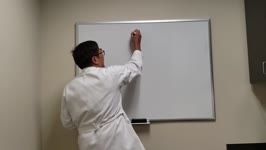 |
Cerebellar Flocculus and Downbeat Nystagmus | Dr. Lee lectures medical students on the subject of cerebellar flocculus. | Nystagmus; Cerebellar Flocculus; Downbeat Nystagmus; Saccades |
| 34 |
 |
Cerebral Polyopia | Summary: • Monocular diplopia: each eye alone o Monocular problem: horizontal or vertical misalignment, neuron o Split between unilateral vs bilateral > Differentiation: Does the diplopia go away with covering either eye? o Unilateral problems: double vision goes away with covering either eye beca... | Monocular Diplopia; Binocular Diplopia; Misalignment |
| 35 |
 |
Cerebral Venous Sinus Thrombosis | Dr. Lee lectures medical students on cerebral venous sinus thrombosis. | Neuro-Ophthalmology; Venous; Thrombosis; Medical Condition |
| 36 |
 |
Charles Bonnet Syndrome | Dr. Lee lectures medical students on Charles Bonnet syndrome | Hallucinations; Vision Loss |
| 37 |
 |
Charles Bonnet Syndrome in the Hemianopic Field | Summary: • Charles Bonnet syndrome o Visual formed hallucinations (often of little people) o Other key features > Vision loss > Insight into the unreal nature of the phenomena > No auditory component • If auditory component exists: o Patient awake, alert, and oriented? o Causes can include: > De... | Charles Bonnet Syndrome; Hallucinations; Visual Loss; Neurodegenerative Disorders |
| 38 |
 |
Chiari Malformations | Dr. Lee lectures medical students on chiari malformations | Chiari; Skew |
| 39 |
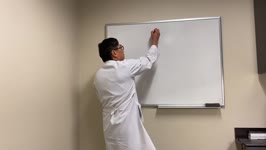 |
Chordoma | Summary: • Notochord general overview: o Present in organisms in the phylum Chordata o Humans fall under this category o In humans, the notochord eventually becomes the nucleus pulposus • Potential problems arising from the notochord o Can get stuck at either the clivus or the sacrum o Clival le... | Chordoma; Notochord; Chondrosarcoma |
| 40 |
 |
Chronic Progressive External Ophthalmoplegia (CPEO) | Summary • Chronic Progressive External Ophthalmoplegia (CPEO) o Definition -Ophthalmoplegia - two eyes don't move properly -External • Only extraocular muscles (lids and muscles of eye) affected • Intraocular muscles are not affected; pupils are spared -Chronic and progressive o Common present... | CPEO; Mitochondria; Ophthalmoplegia; Ptosis |
| 41 |
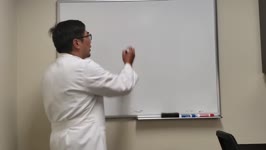 |
Corneal Neuropathic Pain | Dr. Lee lectures medical students on the subject of corneal neuropathic pain. | Cornea; Neuropathy; Confocal; Small Fiber |
| 42 |
 |
Cortical Visual Impairment | Summary: • Cortical Visual Impairment o Term preferred over cortical blindness as patient does not need to be blind o Impaired with vision due to problem in the occipital cortex o Any lesion behind the optic chiasm bodies > homonymous hemianopsia on the contralateral sides of the lesion. • Poste... | Cortical Visual Impairment; Occipital Cortex; Cerebral Visual Impairment |
| 43 |
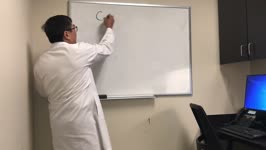 |
Cotton Wool Patches in Neuro-op | Dr. Lee lectures medical students on cotton wool patches in neuro-ophthalmology. | Cotton Wool Patches; Neuro-Ophthalmology; Medical Condition |
| 44 |
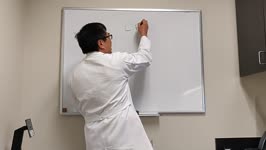 |
Craniopharyngioma | Summary: • Craniopharyngioma o Cranio = head o Pharyngioma = pharynx • Two embryologic origins o Posterior pituitary -Neuroectoderm origin (diencephalon) -Projecting down ("stalactite") o Anterior pituitary -Surface ectoderm origin (pharynx) -Projecting up ("stalagmite") o Rathke's cleft -Betwee... | Craniopharyngioma; Mass; Suprasellar; Sella; Bitemporal Field Loss |
| 45 |
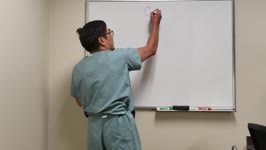 |
Cupping in AION | Dr. Lee lectures medical students on the subject of cupping in AION. | Optic Neuropathy; Giant Cell Arteritis; Ischemia |
| 46 |
 |
Diabetes in Neuro-Ophthalmology | Dr. Lee lectures medical students about the role of diabetes in neuro-ophthalmology. | Pathology; Diabetes; Neuroanatomy |
| 47 |
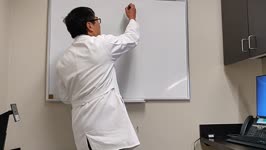 |
Diplopia: Points to Consider | Summary: • Diplopia (seeing two images) can be grouped into being binocular or monocular o Binocular diplopia involves both eyes being open -One eye looks at target while the other does not -Covering one of either eye makes double vision disappear -Treatment requires neuro-ophthalmology • Can af... | Diplopia; Pinhole; Misalignment |
| 48 |
 |
Dominant Optic Atrophy | Dr. Lee lectures medical students on dominant optic atrophy. | DOA; OPA1; Pseudo-glaucomatous Cupping; Central Scotoma; Cecocentral Scotoma; ADOA Plus |
| 49 |
 |
Dorsal Midbrain Syndrome and Parinaud Syndrome | Dr. Lee lectures medical students on dorsal midbrain syndrome. | Pathologies; Paresis; Neuroanatomy |
| 50 |
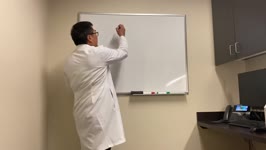 |
Duane Syndrome | Summary: • Duane Syndrome -congenital absence of 6th cranial nerve o Types 1. Problems with abduction 2. Problems with adduction 3. Problems with both abduction and adduction 4. Paradoxical adduction with attempted abduction o DDx > Sixth nerve palsy > INO > Esotropia/Exotropia o Features > Eyes a... | Duane Syndrome; Cranial Nerves; Sixth Cranial Nerve |
